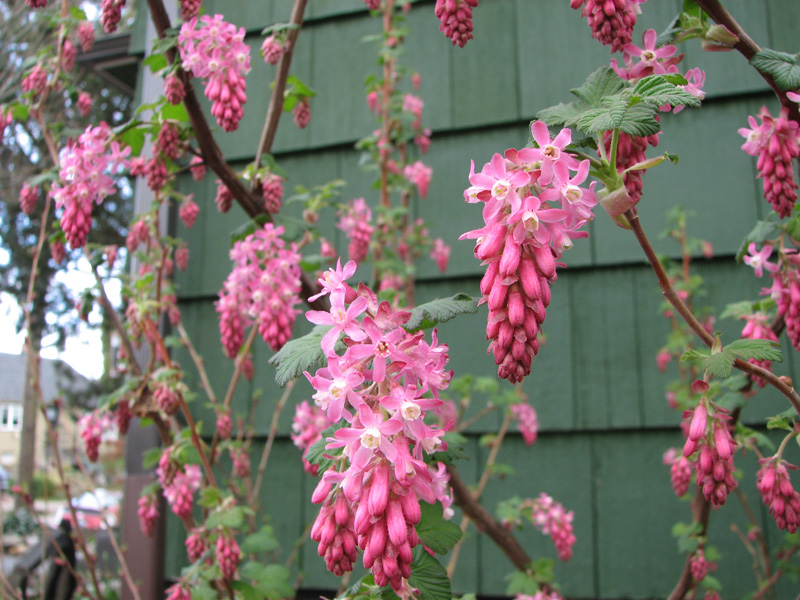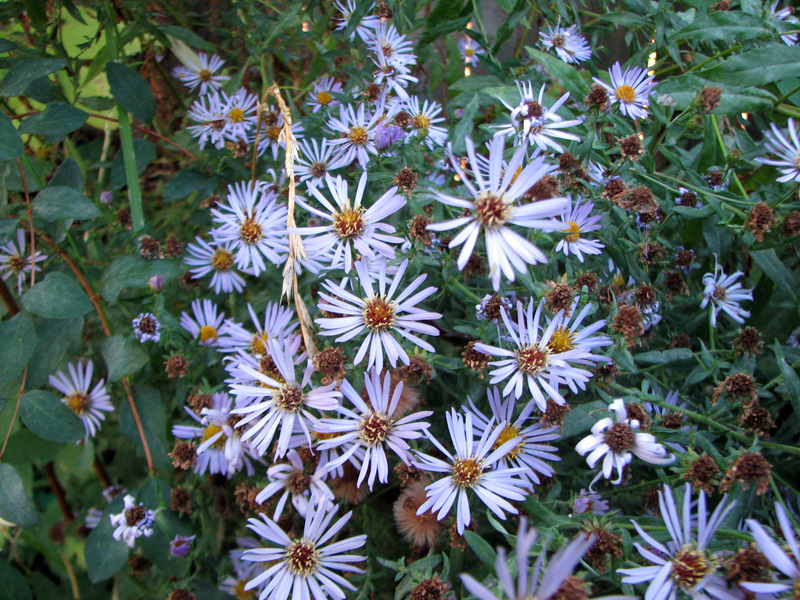Note: Rosewig didn’t provide pictures of their habitat, so all pictures included are merely representative and are not from Rosewig’s yard.
Site Information: Rosewig’s habitat in Beaverton has full sun, part sun, and shade light conditions and dry to wet soil conditions as well as a slope
What inspired you to enroll in the Backyard Habitat Certification Program?
We wanted to reduce lawn space and have something different, attractive, eco and wildlife friendly.
How would you describe your habitat?
The first project was a small space between the driveway & neighboring fence line and we added a corner of our backyard where an oversized tree was removed earlier and needed some work. We used the “lasagna” method to prepare the areas in the late fall. In early spring we planted our first native plants, added water features, a nurse log & insect habitat spaces.
What are your top three favorite native plants and why do you love them?
Now that it’s been more than year after completion and we have seen all of the plants through all 4 seasons, the favorites are:
1) Ribes sanguineum (Red flowering currant) for it’s structure and color throughout the year
2) Mimulus guttatus (Yellow Monkey flower) for it’s many flowers that reseed, but are effortlessly dealt with
3) Aster douglasii (Douglas Aster) because the number of bees that visit it is amazing
What changes have you observed as a result of creating habitat?
Yes, there were neighbors who asked questions when we were working on things. The area looks very healthy this season and 1 or 2 plants failed to survive. We definitely noticed an increase in bees last summer. A squirrel used the loosened soil to bury food. The increase in bird activity all year long was very noticeable. We also noticed less insect activity in the house which may or may not be related to the increase in bird activity outside.
What were the two most significant challenges you encountered while creating habitat, and how did you address them?
We were fortunate to not have any challenges with weed removal or erosion control. The only problem for us was not being able to find a few of the plants in the plans at the suggested nurseries, like Koeleria micrantha (Prairie Junegrass), Campanula rotundifolia (Common Harebell) & Clarkia amoena (Farewell to Spring). We improvised with other natives that sometimes worked out.
What resources did you find especially helpful?
The Portland Plant list was a great resource for understanding more about native plants overall. We acquired a very good book Real Gardens Grow Natives by Eileen M. Stark with pictures and descriptions of plants that helped with visualizing how the garden will look.
How do you enjoy your Backyard Habitat throughout the different seasons? What are its highlights in each season?
We enjoy the relative low maintenance & water use of these gardens. Cutting back on the lawn helped with that too. It has been fun to watch the plants flourish from 1st planting to second growing season. We have redone two other beds with mostly native plants and have exchanged garish non-natives with native alternative and the results are amazing.
What part of your backyard habitat are you most proud of?
It’s really hard to say as things are still in “a work in progress” mode. Once we finish the whole project, there might be a favorite or two that emerge.
Is there anything else you’d like to add about your journey?
We started with one small section which then became two. The more we read, shopped, talked about native plants, the more we added around both our front & back yards. We have learned a whole new way of gardening. It has all been very interesting and rewarding.



